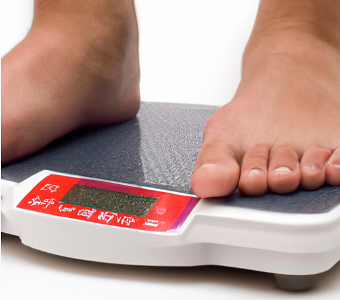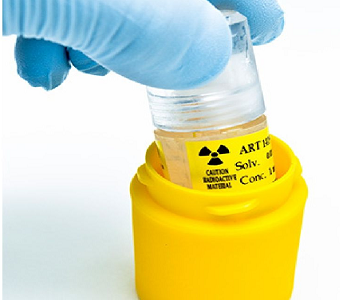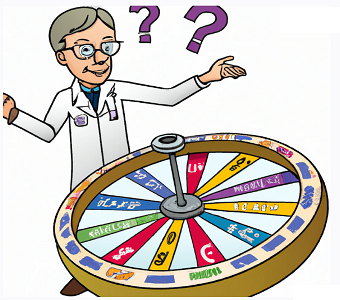2013 has been a year of change in the landscape for publicly traded antibiotic developers, driven by Cubist Pharmaceuticals’ (CBST) high-profile acquisitions of competitors Trius (TSRX) and Optimer (OPTR) for a combined sum of nearly $1.6 billion ($704 million and $801 million, respectively). By no means were these small acquisitions: Cubist currently trades at a valuation of just over $4.5 billion. (Read more about the acquisitions and why we’re bullish on Cubist, here).
In light of these strategic buyouts and the media’s increasing focus on “superbugs” and antibiotic-resistant bacterium, investors have begun sniffing around for the next small, lucrative antibiotic developer. Enter Cempra, Inc (CEMP), which since our initial commentary to PropThink subscribers has climbed by almost 50%. Cempra develops the macrolide solithromycin for respiratory infections and Taksta (fusidic acid) for use in prosthetic joint infections. At a market capitalization of $366 million and an enterprise value of less than $275 million, Cempra is an attractive holding for the long-term investor: solithromycin could realistically test blockbuster status as its approved indications, and even off-label use, expand significantly during its branded lifetime. In addition, the company has a phase 2 read-out approaching before year-end, key proof of concept results for Taksta that should interest investors and traders alike given the value-driving nature of this event.
Solithromycin (CEM-101)
Following repeat questions from readers regarding this small company, we sent the following to PropThink Premium subscribers in August:
Following Trius & Optimer Acquisitions, Cempra is an Attractive Next-Gen Antibiotic Play
-Buy CEMP for small-cap exposure to antibiotic space.
After trading to a new 52-week high of $9.54, Cempra (CEMP) took a small haircut as traders took some gains off the table. Before we flesh out our full thesis, here’s a quick take on Cempra’s value proposition. The company focuses on the development of next-gen antibiotics, a space in flux as more virulent and resistant bacteria continue to emerge, with its two clinical programs CEM-101 (solithromycin) and CEM-102 (TAKSTA). Cempra’s Phase III antibiotic, solithromycin, focuses on addressing the $1 billion Community-Acquired Bacterial Pneumonia (CABP) market, currently dominated by macrolide antibiotics such as Pfizer’s (PFE) Zithromax (azithromycin), and generic clarithromycin (formerly markets by Abbott (ABT) as Biaxin). Given that a large variety of bacteria can cause CABP, FDA approval for solithromycin essentially opens the gates to a broad approval in a plethora of indications, particularly to the multi-billion dollar respiratory tract infection segment. A positive response from the FDA regarding Phase III data should usher in the next generation of macrolide antibiotics with Cempra appreciating in tandem. . .
Solithromycin is a next generation macrolide currently being tested in a phase 3 program in moderate to moderately-severe community-acquired bacterial pneumonia (CABP). The first of two planned phase 3 trials, SOLITAIRE (NCT01756339), tests an oral formulation of solithromycin against Bayer’s moxifloxacin, and data is expected by mid-2014. The second Phase 3 trial (NCT01968733) will test an IV-to-oral solithromycin regimen, similar to Trius’ strategy with tedizolid, and patient enrollment is scheduled to begin before the end of this year. Another phase 2 trial (NCT01591447) evaluating solithromycin was completed earlier this year, achieving 100% efficacy in a small set of patients with uncomplicated gonorrhea.
Solithromycin is on track to supplement and/or replace older generation antibiotics that constitute the current standard of care. Due to increasing antimicrobial resistance, there’s a pressing need for a next-gen macrolide that can circumvent the resistances of many bacteria common to respiratory infections. Solithromycin has so far demonstrated in-line potency and improved tolerability compared to competing macrolides. Most of the currently used antibiotics, such as azithromycin, clarithromycin, and levofloxacin, were approved prior to the twenty-first century, so it shouldn’t come as any surprise that bacteria are developing resistance to these drugs. At least 30% of pneumococci in the U.S. are now resistant to azithromycin, the best-selling macrolide. Macrolide resistance in Asia is particularly alarming, with reports of erythromycin resistance to S. pneumoniae of 96.4% in China and 81.4% in Japan. The CDC released a report earlier this year highlighting the threat of antimicrobial resistance. And unlike telithromycin (branded as Ketek), a ketolide approved in 2004 and later pulled from two indications by the FDA due to reports of liver failure (among other issues), solithromycin has yet to demonstrate evidence of the toxicity, myasthenia gravis exacerbations, or visual disturbances associated.
Community-acquired bacterial pneumonia, or CABP, causes 5-6 million infections and 1 million hospitalizations annually in the U.S. The current standard of care for CABP involves either: (1) a β-lactam + a macrolide, or (2) a fluoroquinoline. The β-lactam (like ceftriaxone) in moderate to severe cases of CABP usually requires intravenous (IV) administration over the course of 7-10 days. If solithromycin is approved as an oral monotherapy, patients choosing the macrolide option would no longer have to come into the hospital for daily injections over the course of their therapy.
Increased macrolide resistance has led physicians to turn to fluoroquinolones despite heightened side effects. Fluoroquinolones are very effective due to their broad spectrum efficacy (meaning they target both Gram-positive and Gram-negative bacteria). However, their broad range of attack is also a disadvantage in that they inadvertently kill healthy bacteria, increasing the risk for ailments such as Clostridium difficile infections. C. Difficile can cause life-threatening diarrhea and kills 14,000 people per year in the US. The CDC labeled the bacteria an immediate public health threat. Other side effects associated with fluoroquinolones include increased risk of nerve damage and tendonitis. As a result of these safety risks, fluoroquinolones are not administered in children except when all other options have failed, and are restricted outside the U.S. in countries such as Australia and the UK.
Assuming data from the phase 3 solithromycin trials is in line with previous results, and the FDA approves this novel macrolide, solithromycin presents a key new tool in physicians’ arsenal. And with an expanding label, solithromycin sales should drive considerable value for this small company.
In CABP, Good Efficacy and Strong Safety
In a phase 2 CABP trial that Cempra completed in July of 2011, solithromycin demonstrated comparable efficacy to levofloxacin (J&J’s (JNJ) Levaquin), with a clinical response rate in the ITT (intent to treat, n=132) population of 84.6% vs. 86.6% for levofloxacin. Early response rates (day 3) were 72.3% and 71.6%, respectively. This is important because early response rate is the primary endpoint in the ongoing phase 3 SOLITAIRE trial pursuant to the FDA’s guidelines. Efficacy by pathogen was also comparable across all strains tested. Solithromycin’s response rate against S. pneumoniae in the microbiological-ITT population was slightly lower at 57.1% (n=4) vs. 66.7% (n=2), but the sample sizes are so low that one cannot draw any strong conclusions (for instance, one more success in the solithromycin group would have resulted in a higher response rate).
Since the telithromycin debacle, the FDA will no doubt place greater emphasis on safety. Solithromycin reported considerably fewer Treatment Emergent Adverse Events (TEAEs) (29.7%, n=19 vs. 45.6%, n=31) and demonstrated favorable safety nearly across the board. Six patients (8.8%) in the levofloxacin arm discontinued the study due to TEAEs compared to zero in the solithromycin group.
No clinically meaningful difference was observed in parameters associated with liver toxicity. Two patients experienced elevation of AST levels, but no associated bilirubin increase was observed, and while one patient experienced grade 3 ALT (alanine aminotransferase) elevation, that patient had an underlying HCV infection and grade 2 ALT elevation at baseline. One case of hyperbilirubinemia in the trial was attributed to an existing hereditary disease, Gilbert’s syndrome. Furthermore, a more recent study concluded that solithromycin was well-tolerated in patients with mild to severe chronic liver disease and that no dosage adjustments were needed to compensate for decreased liver function. (It’s been hypothesized that telithromycin’s inhibition of the nicotinic acetylcholine receptors, which solithromycin does not do, is the cause of its detrimental side effects.)
The key takeaway here is that solithromycin seems to work as well as the current standard of care, but with an improved side effect and safety profile, which is particularly conducive to its use in combination therapies, a mainstay of antibiotic therapies. More importantly, solithromycin offers an alternative as a next-generation macrolide to combat resistant bacterial strains.
|
Solithromycin in vitro Activity Against CABP Bacteria (MIC90 (µg/ml)) |
||||
|
Solithromycin |
Azithromycin |
Levofloxacin |
Amox/Clav |
|
|
Streptococcus pneumoniae |
0.25 |
>16 |
1.0 |
>8 |
|
Streptococcus pyogenes |
0.03 |
>16 |
1.0 |
0.25 |
|
Hemophilus influenza |
2 |
2 |
0.12 |
2 |
|
Legionella pneumophila |
0.015 |
2 |
0.5 |
Not Effective |
|
Mycoplasma pneumoniae |
0.000125 |
0.0005 |
0.5 |
Not Effective |
|
Chlamydophila pneumonia |
0.25 |
0.125 |
Not Tested |
Not Effective |
Minimum inhibitory concentration 90 (MIC90) is the lowest concentration of an antimicrobial that will inhibit the visible growth of a microorganism by 90%.
In preclinical studies (data above), solithromycin demonstrated superior potency in vitro against most key CABP bacteria. In Streptococcus pneumonia, the most common pathogen in CABP and responsible for up to 70% of infections, solithromycin was four times more potent than levofloxacin and 64 times more potent than azithromycin Solithromycin was also superior against Legionella, the deadliest atypical pathogen with a mortality rate of 14%. Compared to telithromycin, solithromycin was two to four times more potent.
In another pre-clinical study, solithromycin was shown to be active against all group A streptococcal strains with defined macrolide resistance. Solithromycin’s activity against macrolide-resistant strains is hypothesized to be due to its ability to bind to three sites on the ribosome. This necessitates mutations at three sites for resistance to develop. No other known macrolide can bind to more than two units.
Preclinical efficacy figures in the antibiotic segment are important to note because it’s a direct indicator of the drug’s ability to kill bugs: in other words, a compound that can kill bugs in a test tube can generally kill bugs in humans. From there, safety is key, part of the reason solithromycin is an atttractive asset.
And In Gonorrhea
Gonorrhea is the second most infectious disease in the world and affects about 820,000 people per year in the U.S. The current standard of care is ceftriaxone, administered intravenously, either alone or in combination with azithromycin or doxycycline. The revocation of cifixime as a recommended therapy leaves no oral option for the treatment of gonorrhea. To quote the CDC:
In the past, gonorrhea has developed resistance to every antibiotic recommended for treatment, leaving the cephalosporins, which include cefixime and ceftriaxone, as the final recommended class of drugs. In light of this history and the recent lab data, CDC researchers are concerned that continued use of cefixime may prompt gonorrhea to develop resistance to all cephalosporins. (source)
Solithromycin is currently the only oral drug in clinical development for gonorrhea. Cempra noted in its 3rd quarter earnings call that it aims to get gonorrhea approved concurrently with CABP. A clinical trial testing the pharmacokinetics and safety of solithromycin capsules in adolescents with suspected or confirmed bacterial infection has been registered on clinicaltrials.gov.
Taksta
Taksta (fusidic acid), Cempra’s second pipeline asset, is an oral, narrow-spectrum antibiotic being tested in the treatment of prosthetic joint infections (PJI) caused by staphylococci such as MRSA (methicillin-resistant staphylococcus aureus). Interim data from a phase 2 trial are due later this year. Fusidic acid has been marketed outside of the U.S. since the 1960s and is approved in Western Europe and Australia. Its chemical structure is unique, and there is no known cross-resistance with any other antibiotic. Hatch-Waxman, Orphan, and QIDP exclusivity (described below) should provide Taksta with up to 12 years of market protection in the U.S.
Previously, a randomized, double-blind Phase 2 trial in ABSSSI (acute bacterial skin and skin structure infections) pitted Taksta against linezolid (branded as Zyvox by Pfizer), the only oral antibiotic FDA-approved for treating MRSA infections. Clinical success in the ITT population was 86% (n=67) vs. 95% (n=73) with linezilod; 92% vs. 99% in the CE population; and 95% vs. 97% in the early response ITT. Safety was comparable across both arms: 48% of the Taksta ITT group, versus 49% on linezolid, experienced adverse events. Three Taksta patients experienced serious adverse events, but none of these were deemed related to medication.
The phase 2 trial in PJI (NCT01756924) is currently recruiting, and interim data is expected before the end of this year. The study tests an oral regimen of Taksta and Rifampin (a commonly used rifamycin antibiotic) vs. the two-stage revision method (current standard of care in the U.S.), which consists of multiple surgeries and intravenous antibiotic treatment over six weeks. Given the $100,000+ pricetag on current revision methods, as the only oral antibiotic, Taksta is a highly attractive option for the roughly 8,000 patients experiencing a PJI in the U.S. annually. It could usher in a shift in physicians’ approach, sharply reducing healthcare costs, to bring PJI treatment in-line with the cheaper, less-intrusive European approach.
Operational Status and Finances
Cempra ended the third quarter with $110.4 million, enough, says the company, to fund the phase 3 solithromycin program and support a NDA filing. We note that the GAIN (Generating Antibiotic Incentives Now) Act, effective in October of 2012, incentivizes antibiotic developers by providing extensive market exclusivity to newly approved assets. Under GAIN, a qualified infectious disease product (QIDP) is a new “antibacterial or antifungal drug for human use intended to treat serious or life-threatening infections, including those caused by an antibacterial or antifungal resistant pathogen, including novel or emerging infectious pathogens.” QIDPs receive an additional five years of market exclusivity on top of the five years of exclusivity provided to new chemical entities (NCEs) and seven years provided to NCEs that are Orphan drugs. Orphan QIDPs that are also NCEs could have up to 12 years of exclusivity, patents aside. These products also receive Priority Review.
Taksta received Orphan Designation from the FDA on October 29 and should soon receive a QIDP designation because it targets MSRA – an incremental near-term catalyst.
What’s it Worth?
Telithromycin’s case serves as a good baseline for considering solithromycin’s market potential because it is the only macrolide recently approved for the treatment of respiratory tract infections. In 2005, its first full fiscal year on the market, the drug generated U.S. sales of roughly $185 million, just before its label contracted with the previously unreported toxicity findings.
Initially, solithromycin revenues will be comparatively lower due to the fact that it will only be approved in CABP, whereas telithromycin was also approved in acute bacterial sinusitis and acute bacterial exacerbation of bronchitis. Nevertheless, analysts predicted billion-dollar-plus peak sales for telithromycin before it was approved – also before its indications were narrowed – thus solithromycin may be able to make up that gap as the label expands to include these incrementally larger indications. Bear in mind, physicians will likely use solithromycin off-label in many of these similar macrolide-susceptive indications.
Below are a few antibiotics, both macrolides and flouroquinolones, and sales achieved at peak before generic entrants.
|
Patent Expiration |
Peak Sales (year) |
2012 Sales |
|
|
Zithromax/Zmax (azithromycin) |
2005 |
$2b (2005) |
$435m |
|
Levaquin/Floxin (levofloxacin) |
2011 |
$1.6b (2007) |
$75m |
|
Biaxin (clarithromycin) |
2005 |
$1b (2005) |
$501m |
|
Zyvox (linezolid) |
2015 |
$1.3b (2012) |
$1.3b |
Given that solithromycin appears superior to current macrolides and potentially safer, yet still as effective as fluoroquinolones, it is not unreasonable to suggest that solithromycin sales surpass $1 billion as the label expands in the years following its approval in CABP.
For reference, here’s a breakdown of oral/IV levofloxacin’s progression into new indications:
-
Urinary Tract Infections December 1998
-
Community-acquired pneumonia February 2000
-
Skin and Skin Structure Infections September 2000
-
Nosocomial Pneumonia October 2002
-
Chronic bacterial prostatitis May 2003.
-
Inhalational Anthrax (Post-Exposure) November 2004
-
Acute Bacterial Sinusitis August 2005
-
Acute Bacterial Exacerbation of Chronic Bronchitis June 2006
-
Acute Pyelonephritis June 2006
-
Pneumonic and septicemic plague April 2012
In terms of near-term catalysts, Cempra will release interim results from the phase 2 Taksta PJI trial by the end of this year. The trial calls for total enrollment of 50 patients, thus investors will have an intriguing glance at the product’s efficacy/safety in a portion of the Intent to Treat population. While we have evidence of the product’s efficacy in MRSA infections, this will be the first Cempra-lead look at Taksta’s use in PJI.
More importantly, the phase 3 Oral solithromycin CABP trial will report out in mid-2014, a major event for Cempra. If the trial produces similar or better results than those seen in the phase 2, the FDA should be receptive to approval, and Cempra will be well on its way to commercialization as the additional phase 3 IV-to-oral trial continues.
Following Cubist’s acquisitions of both Optimer and Trius earlier this year, Cempra has become one of just a few standalone, publicly traded antibiotic developers with quality mid- and late-stage antibiotics. We believe this to be a compelling long-term holding and are optimistic about the future of both the solithromycin and Taksta programs. Cempra is well-capitalized to reach key inflection points, and management’s strategy in targeting CABP is favorable for the long-term commercial success of solithromycin, as approval in the indication may foreshadow continued label expansion. Solithromycin is on track to become an important component of the evolving landscape for treating the antibiotic-resistant bacteria, a global phenomenon, and test blockbuster status along the way.
In connection with CEMP, PropThink has taken a long position.




